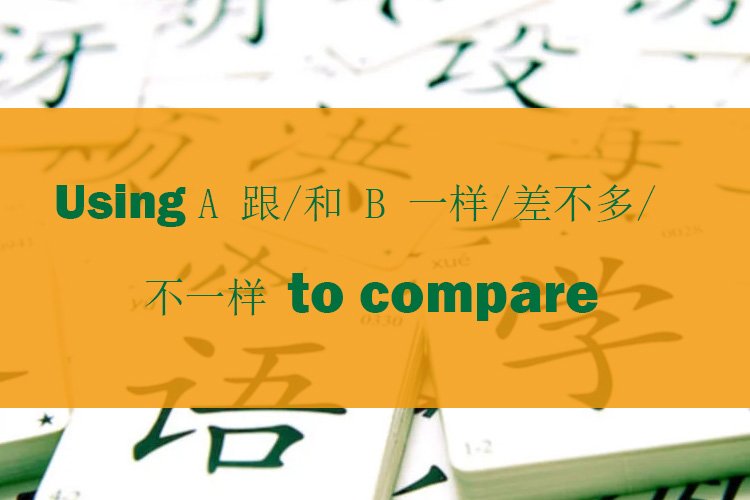Using A 跟/和 B 一样/差不多/不一样 to Compare
In Q1,we have learned how to compare using A 跟/和 B 一样 adj. Let's have a review and learn more ways to use this structre.
|
A 跟 B + (差不多) + 一样 + adj. |
Zhèlǐ de gōngzuò huánjìng hé wǒ yǐqián gōngsī de chàbùduō yīyàng hǎo. 这里的工作环境和我以前公司的差不多一样好。 The work environment here is almost as good as my previous company. |
|
A 跟 B 差不多. |
Xīyǎtú de dōngtiān gēn táiwān de chàbùduō, dōu jīngcháng xià yǔ. 西雅图的冬天跟台湾的差不多,都经常下雨。 The winter in Seattle is similar to Taiwan; it rains a lot. |
|
A 跟 B + 不太一样 |
Suīrán zhège xiàngmù gēn wǒ yǐqián zuò de xiàngmù bù tài yīyàng, dànshì wǒ dōu xǐhuān zuò. 虽然这个项目跟我以前做的项目不太一样,但是我都喜欢做。 Although this project is not the same as the projects I have done before, I like to do both of them. |
|
A 跟 B + intensifier + 不一样. Note: You also can use 和 to replace 跟. |
Wǒ de xiǎngfǎ hé nǐ de yǒudiǎn bù yīyàng, wǒ juédé zhōngguó cài shì shìjiè shàng zuì hǎo de cài. 我的想法和你的有点不一样,我觉得中国菜是世界上最好的菜。 My opinions are a little different from yours. I think Chinese food is the best food in the world. |


